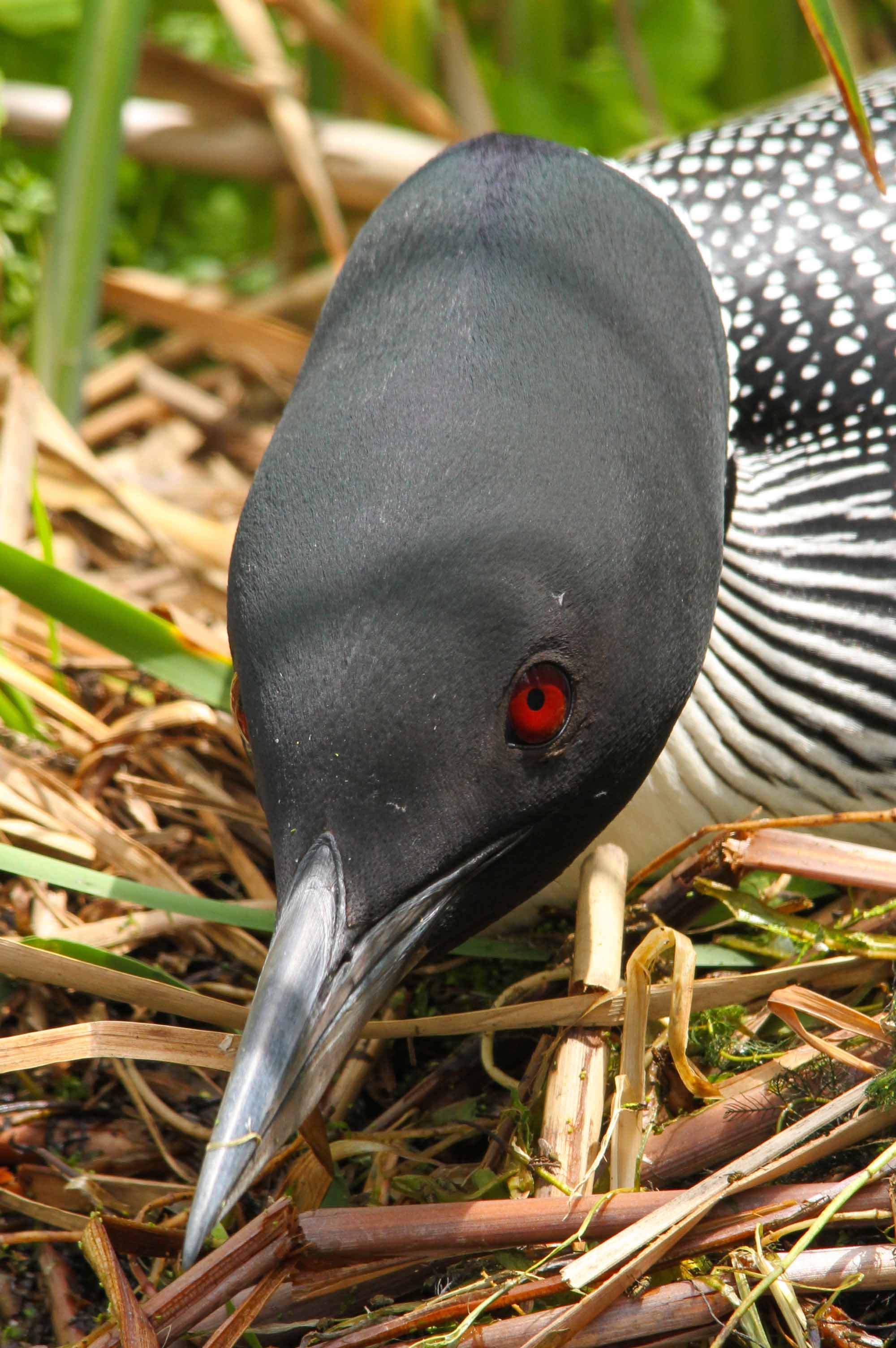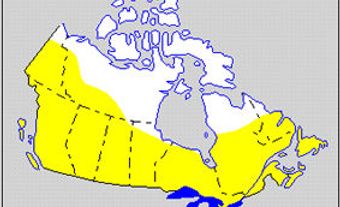Loon (family Gaviidae) is a common name for a distinctive group of 5 large, swimming birds, all confined to the Northern Hemisphere and all occurring in North America. Loons nest on inland lakes and rivers, migrating to the sea for winter.
Description
Summer plumages are black or grey, streaked and spotted in bold patterns with white. Underparts are all white. For winter, dense plumage molts to an unspotted grey. During molting, loons are flightless: common, yellow-billed, arctic and Pacific loons (Gavia immer, G. adamsii, G. arctica and G. pacifica , respectively) molt in late winter and red-throated loons (G. stellata) in autumn. Sexes are similar. Bills are strong, straight and pointed; necks, long and stout; tails, very short.
The legs, set far back on the body and with flattened sides and fully webbed toes, are well adapted to swimming. Walking is accomplished only with difficulty. As the wings are comparatively small, loons must run along the water surface to become airborne.
Loons are known for their various cries, particularly a weird, mirthless laugh and an eerie, wolflike howl. These unique sounds are symbolic of Canada's North.
Nesting
Loons come to shore only to nest, usually laying 2 olive-brown eggs with darker spots, on a heap of vegetation near the water's edge. Both parents incubate the nest for about 4 weeks and assist in rearing young. The uniformly greyish young leave the nest soon after hatching and often ride on their parents' backs.
Diet
Loons eat mainly fish, diving to depths of 75 m, usually for less than one minute.

 Share on Facebook
Share on Facebook Share on X
Share on X Share by Email
Share by Email Share on Google Classroom
Share on Google Classroom








